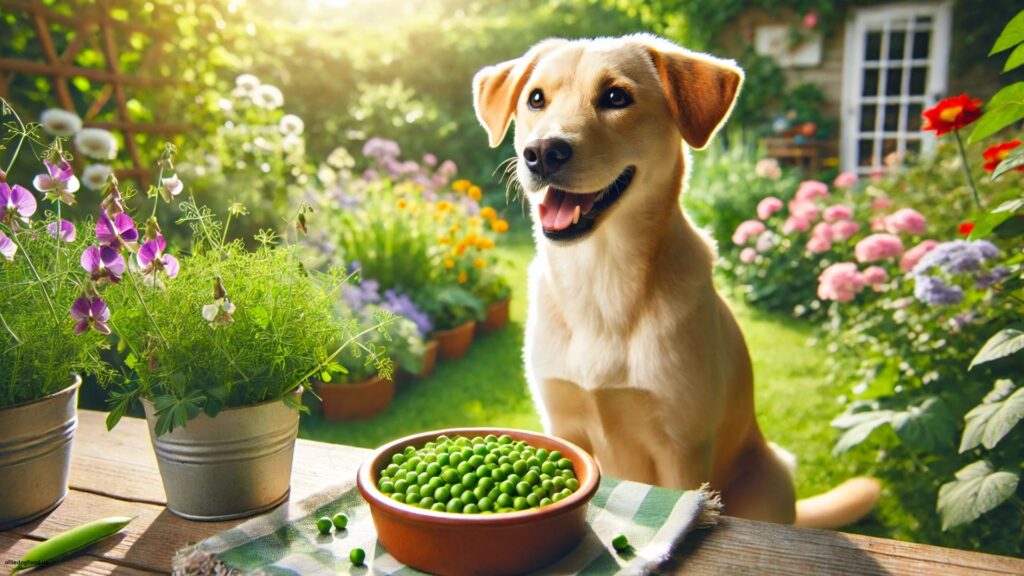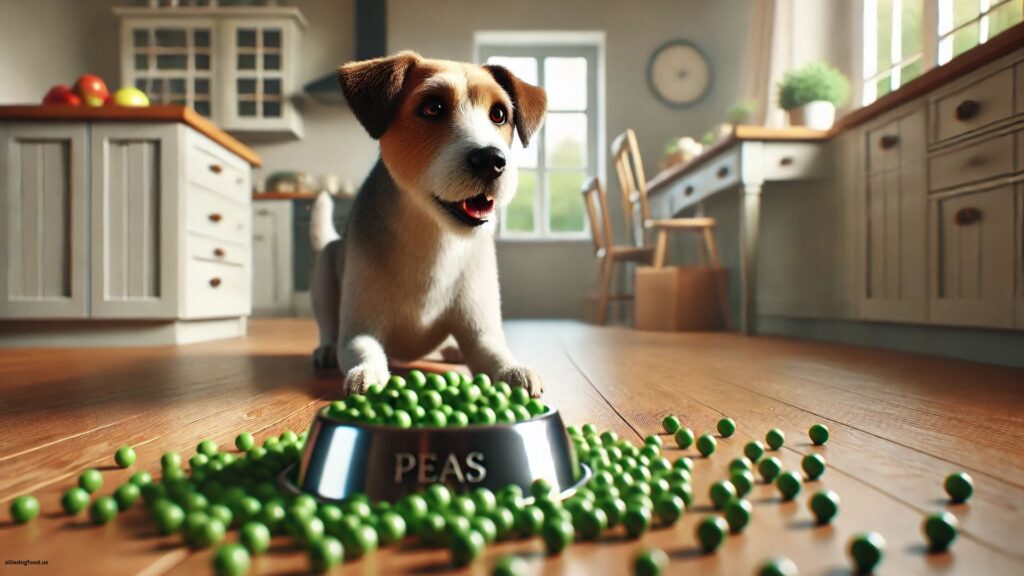When it comes to our furry friends’ diets, dog owners often find themselves wondering what human foods are safe and beneficial for their pets. One such food that frequently comes up in discussions is peas. Can dogs eat peas?
The answer is a resounding yes! Peas, including green peas, snow peas, sugar snap peas, and garden or English peas, are not only safe for dogs but can also be quite beneficial.
This blog post will delve into the top five benefits of feeding peas to your dog, emphasizing why these little green powerhouses can be a great addition to your dog’s diet.
Why is it Important to Consider Peas in a Dog’s Diet?
Before diving into the benefits, it’s crucial to understand why considering peas as a part of your dog’s diet is important. As pet owners, we constantly seek ways to improve our dogs’ health and well-being through nutrition.
Incorporating a variety of fruits and vegetables can provide essential vitamins, minerals, and other nutrients that might be missing from their regular kibble. Peas, in particular, are packed with beneficial nutrients and can contribute to a more balanced and nutritious diet for your dog.

Nutritional Value of Peas
Peas are a nutrient-dense food, offering a variety of vitamins and minerals that are essential for your dog’s health. Some of the key nutrients found in peas include:
- Vitamin A: Important for vision, skin health, and immune function.
- Vitamin B1 (Thiamine): Essential for energy metabolism and nervous system function.
- Vitamin K: Plays a role in blood clotting and bone health.
- Folate: Vital for cell division and DNA synthesis.
- Fiber: Helps with digestive health and regular bowel movements.
- Protein: Provides amino acids necessary for muscle development and repair.
Top Five Benefits of Peas for Dogs
1. Rich in Nutrients
Peas are loaded with essential vitamins and minerals that support overall health. The combination of vitamins A, B, and K, along with folate and iron, helps in maintaining healthy vision, skin, bones, and blood cells. These nutrients are crucial for a dog’s growth and development, making peas a valuable addition to their diet.
2. High in Fiber
Fiber is a vital component of a dog’s diet, aiding in proper digestion and maintaining a healthy weight. Peas are an excellent source of dietary fiber, which helps regulate bowel movements, prevents constipation, and promotes a healthy digestive system.
A diet rich in fiber can also help manage weight by making dogs feel fuller for longer periods, reducing the likelihood of overeating.
3. Supports Eye Health
The vitamin A found in peas plays a significant role in maintaining good vision and eye health. This is particularly important for older dogs who might be prone to vision problems. Including peas in their diet can help prevent issues such as cataracts and other age-related eye conditions.
4. Promotes Heart Health
Peas are a good source of potassium, which is essential for heart health. Potassium helps regulate blood pressure, ensuring that your dog’s heart functions efficiently. Additionally, the antioxidants present in peas, such as flavonoids and carotenoids, help combat oxidative stress, reducing the risk of heart disease.
5. Boosts Immune System
A strong immune system is crucial for dogs to fend off illnesses and infections. Peas are rich in antioxidants, which help strengthen the immune system by neutralizing harmful free radicals in the body. Vitamins A and C found in peas also play a role in boosting immunity, keeping your dog healthy and active.

How to Safely Feed Peas to Your Dog
While peas are beneficial for dogs, it’s essential to feed them correctly to avoid any potential issues. Here are a few tips:
- Moderation is Key: Like any treat or addition to their diet, peas should be given in moderation. Too many peas can lead to digestive upset.
- Avoid Canned Peas: Canned peas often contain added sodium, which is not suitable for dogs. Opt for fresh or frozen peas instead.
- Cooked or Raw: Peas can be fed to dogs either cooked or raw. However, avoid seasoning them with salt, garlic, or onions, as these can be harmful to dogs.
- Introduce Gradually: When introducing peas to your dog’s diet, start with small amounts to ensure they do not have any adverse reactions.
Frequently Asked Questions (FAQs)
Can all dogs eat peas?
Most dogs can safely eat peas, but some may have specific dietary restrictions or allergies. It’s always best to consult with your veterinarian before introducing new foods to your dog’s diet.
Are there any risks associated with feeding peas to dogs?
The primary risk is feeding peas in large quantities, which can cause digestive issues. Additionally, dogs with kidney problems should avoid peas due to their purine content, which can exacerbate the condition.
Can peas replace regular dog food?
Peas should not replace regular dog food but can be a healthy supplement. They provide additional nutrients but do not contain all the essential components of a balanced dog diet.
Conclusion
Incorporating peas into your dog’s diet can offer numerous health benefits, from improved digestion to enhanced immune function. These nutrient-packed vegetables are an excellent way to boost your dog’s overall health and well-being.
Remember to introduce peas gradually and feed them in moderation to ensure your furry friend enjoys all the benefits without any adverse effects.
Always consult with your veterinarian if you have any concerns or questions about your dog’s diet. By doing so, you can provide the best possible care for your beloved pet.


